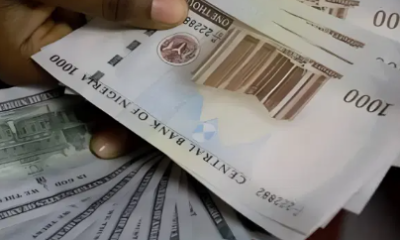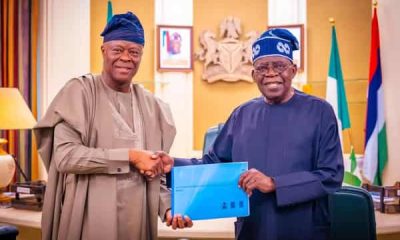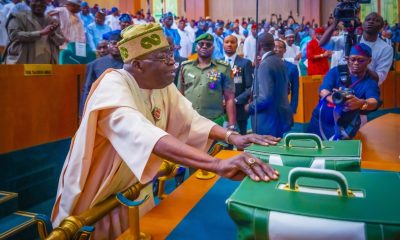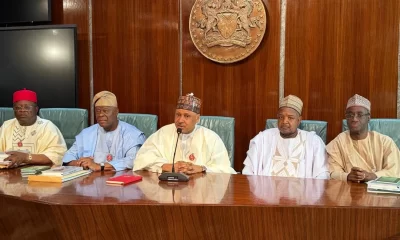Business
Unleashing Africa’s potential in a changing world trade
Published
2 years agoon

By Francisca Emeka- Amaugo
Africa is currently home to 1.3 billion people, a figure projected to rise to 2.75 billion by 2060 when the continent is forecast to have a combined annual output of $16 trillion and an increasingly middle-class market.
And yet, although the continent will, in just 40 years, have a market with more people than India and China combined, there is little mainstream discussion of its trading practices and partnerships.
Since the 1960s, several initiatives have been undertaken to enhance trade integration in Africa. However, substantial tariff and nontariff barriers remain in place.
In recent years, African leaders have shown a renewed push for regional integration by signing the agreement on the African Continental Free Trade Area (AfCFTA).
The AfCFTA has the potential to transform regional trade and thereby lift growth and support livelihoods across the continent. This paper lays out the benefits that successful AfCFTA implementation could unlock for Africa in terms of income, jobs, and other benefits.
It is based on an empirical analysis of the obstacles to trade in goods and services and regional value chain integration along with a discussion of how regional trade integration and supporting policies could help African countries cope with ongoing global and domestic trends.
The empirical analysis investigates the role of trade policy and the broader trade-enabling environment in determining the bilateral goods trade flows and country-level trade in services.
It sheds light on how the implementation of AfCFTA and supporting policies could boost trade and income as well as help African countries integrate into regional value chains.
The findings suggest that plausible reductions in tariffs and nontariff barriers under AfCFTA, along with improvements in broader trade-enabling environment (trade infrastructure, financial development, and domestic security), would substantially boost intra-African trade in goods and services, and support integration into regional value chains.
Further, regional trade integration could be an important element of a strategy for African countries to cope with rapid population growth, climate change, and emerging geopolitical fragmentation.
A specialist in African trade policy, and former head of the African Trade Policy Centre at the UN Economic Commission for Africa, Professor David Luke, looked at what Africa trades and found a clear difference in the type of trade being carried out between African countries and with the rest of the world.
“Trade with the rest of the world in goods is mainly commodities, and in services, mainly tourism, while intra-African trade – the trade between African countries – is more diversified in value-added goods such as manufactures and processed food and services such as transport services, financial services, business services etc.
“But intra-African trade is small accounting for only 18 per cent of Africa’s total trade. We found that over 60 per cent of this trade, although small, is diversified while Africa’s trade with the rest of the world is about 80 per cent commodities, with a heavy concentration in minerals and fossil fuels.”
“If fully implemented,” he adds, “liberalised trade on the African continent offers an incentive for the restructuring of African economies through diversification, agricultural and industrial development.
“Economic modelling suggests the deal could be worth as much as $450 billion for the continent by 2045. The biggest prize, he explains, is that the trade deal offers African countries a credible pathway to follow the play book of successful development experiences in countries that attained rapid transformation and diminished levels of poverty within a few decades through carefully designed trade policy interventions, effective institutions and other economic and social policy reforms.
After an event-packed week of central bank decisions, the naira’s bullish run defied the dollar’s strong momentum.
A few dovish surprises from other central banks, coupled with strong U.S data yesterday, helped to support the U.S dollar.
The local currency saw significant gains on the official and unofficial foreign exchange markets the day before the naira’s gain. On Wednesday, it closed at N1,400 per dollar on the black market.
The CBN recently announced that it had successfully settled all legitimate foreign exchange backlogs, settling $7 billion in inherited claims.
The information was provided in a statement that was mailed by Hakama Sidi Ali, CBN’s acting director of corporate communications.
The remaining amount of the FX backlog was cleared when the CBN finalized the payment of $1.05 billion to settle obligations to bank customers.
To increase credibility and confidence in the Nigerian economy, the CBN chief emphasized how important it is to clear the FX backlog.
The Presidency, via its spokesman, issued a warning to currency speculators, threatening to burn their fingers if they committed acts of patriotism against the naira
Consequently, the greenback was poised for a second week of broad gains on Friday, as the naira continued to appreciate against the US dollar on Thursday, to settle at 1,382/$ at the official market.
For the second week in a row, the dollar index has increased, rising 0.8 percent to 104.095 index points.
Even a rate hike in Japan could not stop the dollar’s march, and an unexpected cut in Switzerland highlighted the difference in interest rate settings between the US Federal Reserve and its global peers.
The dollar gained strength on Thursday due to the Bank of England’s dovish outlook, which caused traders to dump the pound in favor of the dollar.
The Fed revised its forecast for growth in 2024. Although it is still anticipated that the central bank will start lowering interest rates by June, the dollar is predicted to gain from its relative hawkishness when compared to other central banks.
The dollar has found strong support since some US data sparked a USD/risk-off rally yesterday afternoon. For the first time in the past two years, the Leading Index showed a positive month-over-month figure, most likely due to the robust performance of the equity market and a weather-related increase in the average workweek.
The Federal Reserve maintained its forecast for three rate reductions by year’s end and kept the funds rate on hold this week, fluctuating between 5.25 and 5.5%.
However, it added that it won’t act until it is more certain that inflation is steadily declining toward 2%. This year’s cutbacks are now priced in at about 80 basis points, down from the 160 or so that were anticipated at the beginning of the year.
You may like


NOA Akwa Ibom Alerts public on circulation of fake N1000 Notes


Bauchi civil service suspends six officers over alleged misconduct


Naira depreciates to N1,739/$ in parallel market


NURTW, TOAN increase transport fares in Niger after NNPC PMS price hike


Tinubu signs N70,000 minimum wage into law


Aisha Yesufu slams Gov Alex Otti over permission for populist protest
Trending

 Business6 days ago
Business6 days agoPresident Tinubu, Minister Wale Edun and Nigeria’s Fiscal Profile: The Truth and the Lies

 Business7 days ago
Business7 days agoControversy trails Dangote Refinery as stakeholders Allege systemic pushback against local investment

 Business6 days ago
Business6 days agoSAGLEV clinches 2025 Nigeria EV Brand of the Year Award

 Latest1 day ago
Latest1 day agoNigeria’s kidnap-for-ransom industry nets N2.57bn in one year

 Business6 days ago
Business6 days agoOtedola deepens grip on FirstHoldCo with Fresh N14.8bn Share Purchase

 Business7 days ago
Business7 days agoBudgIT faults Tinubu over 2026 budget presentation, cites missing 2025 performance report

 Politics6 days ago
Politics6 days agoFEC approves N58.4 7trn for 2026 budget proposal

 Latest3 days ago
Latest3 days agoU.S. to enforce partial visa suspension on Nigeria, 18 other countries from January 2026

